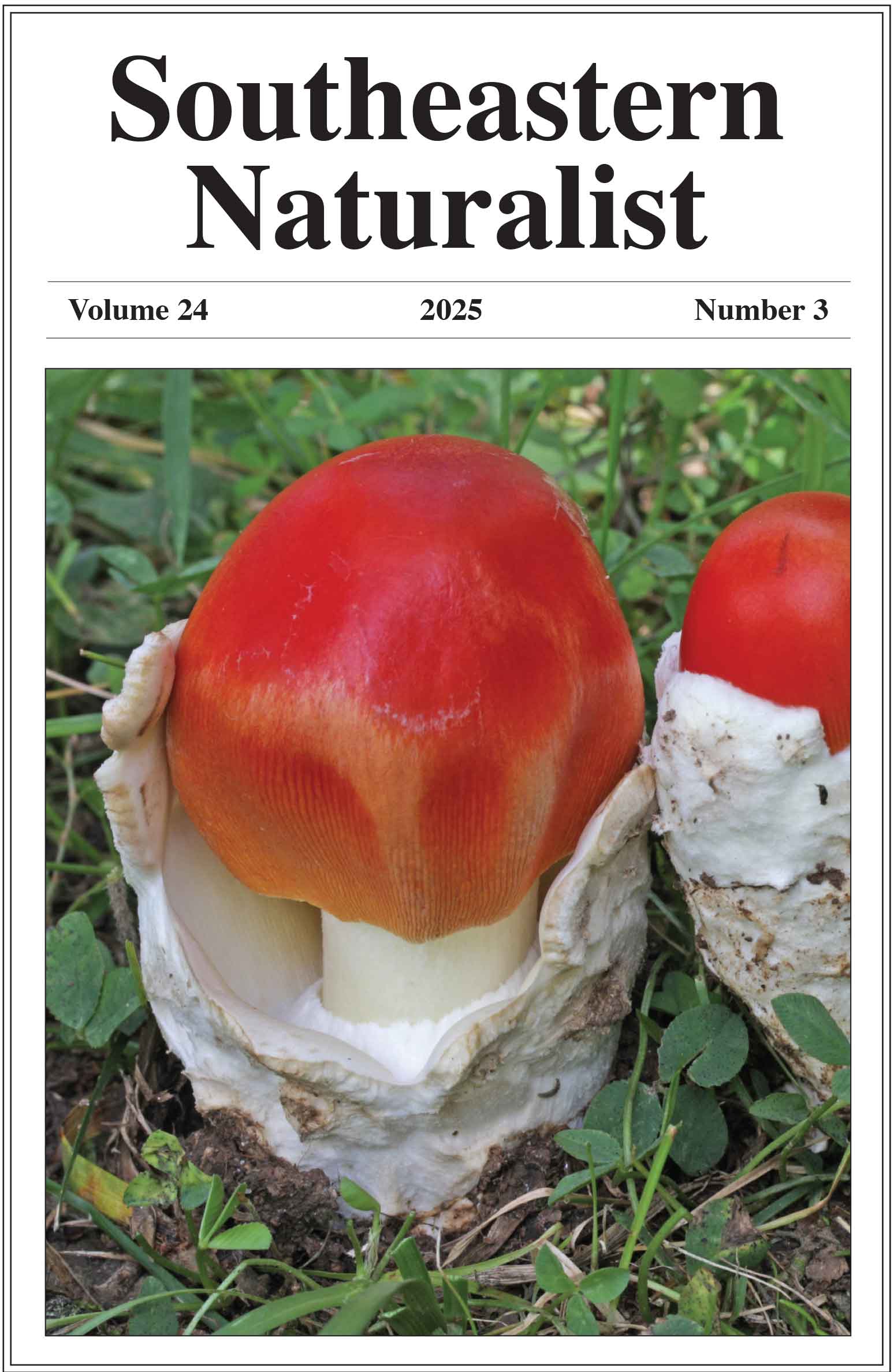A Species Bioprofile for the Veiled Chameleon (Chamaeleo calyptratus)
Venetia S. Briggs-Gonzalez1,*, Bryna L. Daykin1, Paul M. Evans2, Melissa A. Miller1, and Frank J. Mazzotti1
1Department of Wildlife Ecology and Conservation, Fort Lauderdale Research and Education Center, University of Florida, Fort Lauderdale, FL 33314. 2Invasion Science Institute, University of Florida, Gainesville, FL 32611. *Corresponding author.
Southeastern Naturalist, Volume 24, Issue 3 (2025): 315–339
First published early online: 28 September 2025
Abstract
Chamaeleo calyptratus (Veiled Chameleon) is abundant in its native range of the Arabian Peninsula in Saudi Arabia and Yemen. It is a habitat generalist and a sit-and-wait predator of small lizards, insects, and birds. The Veiled Chameleon is one of the largest, most easily recognized chameleon species, with its large head casque and bright colors. Despite harvesting for the pet trade, the Veiled Chameleon is currently considered a species of least concern in its native range. There have been several introductions outside of its native range, particularly in Hawaii and Florida, where they have become established. In Florida, Veiled Chameleons were first recorded in 2001 and have been reported in 26 counties with 4 identified breeding populations. The first Veiled Chameleons on Hawaii were recorded in 2002, and this large breeding population was successfully eradicated with a 10–year targeted-removal program. This species is considered potentially invasive in Florida and invasive in Hawaii because of its high fecundity, low detectability, and opportunistic diet that includes native and endemic birds and reptiles. Removal efforts directed at 2 of the breeding populations in Florida and the Hawaii population provided insights regarding potential management and control of the spread of the species. However, with continued demand for Veiled Chameleons in the pet trade, intentional releases continue to seed new populations that may go unnoticed by scientists for several years. We provide a comprehensive summary of the natural history of Veiled Chameleons, including management methods and potential ecological impacts as a potential invasive species in the southeastern US.
![]() Download Full-text pdf (Accessible only to subscribers. To subscribe click here.)
Download Full-text pdf (Accessible only to subscribers. To subscribe click here.)
Access Journal Content
Open access browsing of table of contents and abstract pages. Full text pdfs available for download for subscribers.
Issue-in-Progress: Vol. 24( 4) ... early view
Check out SENA's latest Monograph and current Special Issue in progress:













 The Southeastern Naturalist is a peer-reviewed journal that covers all aspects of natural history within the southeastern United States. We welcome research articles, summary review papers, and observational notes.
The Southeastern Naturalist is a peer-reviewed journal that covers all aspects of natural history within the southeastern United States. We welcome research articles, summary review papers, and observational notes.